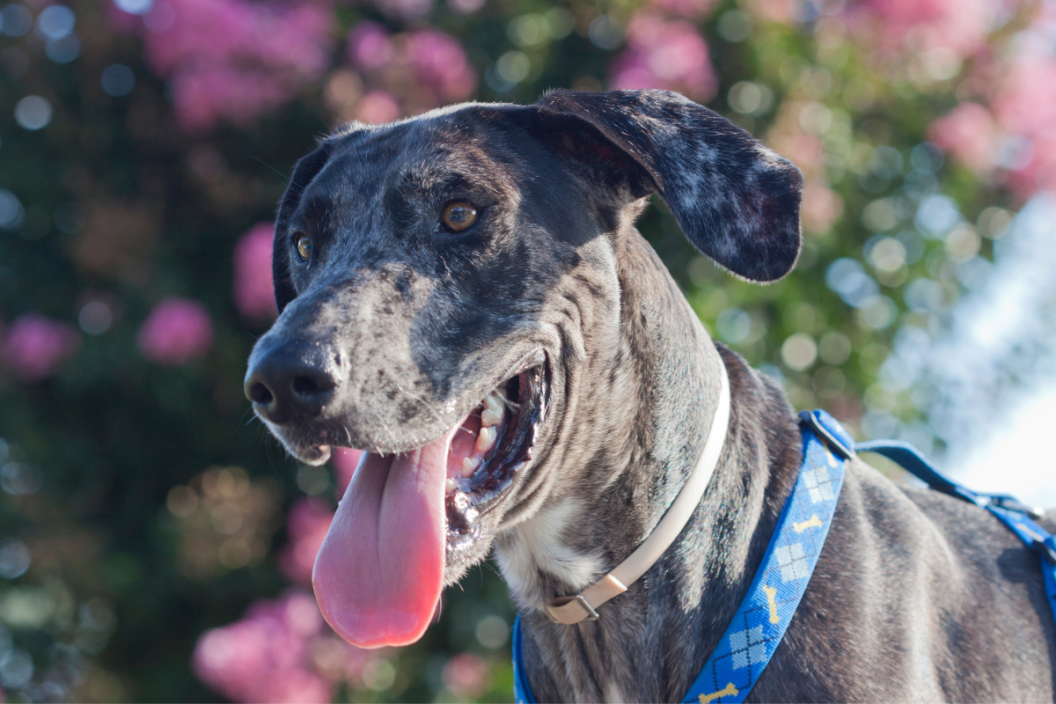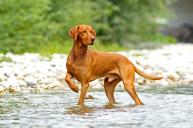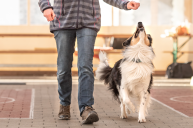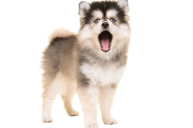Regal, gentle giants!
Great Danes are the tallest dog breed, often towering over adult humans when standing on their rear legs. Originally bred as boar hounds, the breed was perfected and revered in Germany, known as Deutsche dogge. However, there is no real connection to Denmark, yet the name comes from Grand Danois, which means "Big Danish."
These dogs are known for their long strides in pursuit of a quarry, mostly boars or bears, and are thought to have descended from English Mastiffs and Irish Wolfhounds.
Great Dane Breed History
Great Danes were known as German Boarhounds and slowly became dogs only owned by royalty due to their elegance and regal stance. They had many different names, like the German Mastiff, before they finally became known as the Great Dane. According to the Great Dane Club of America, the dogs were used as hunting dogs with a higher prey drive going after wild boar, but once they were phased out in that capacity, they were transitioned into a watchdog.
The Apollo of dogs became the ultimate companion and great guard dog — No one wants to walk where they don't belong with a pup this big sitting there, especially with all that drool!
Types of Danes & Personalities
The large breed has a wide variety of coat colors. Most commonly, you see what the AKC refers to as the "Harlequin," which is black patches with a white pattern. However, they also come in a beautiful brindle, fawn, merle, chocolate, and blue.
These adult dogs can have either pointed ears or ears that lay flat. The Great Dane is a very large dog, but a very sweet dog, and it can be very affectionate with children. They do better with children they have known since they were puppies, though they tend to do well with children in general. They do well with socialization with other dogs and tend to be very easygoing and friendly.
Diet & Activities
https://www.instagram.com/p/CPoRH2UBslb/
RELATED: Traveling With Service Dogs? Tips for Flying, Driving, and More
Great Danes should also be monitored during exercise as puppies since their bones can be delicate before they are fully developed. They are also susceptible to bloat, also known as Gastric torsion, which can be avoided with rest periods during activity after meals. Because of this, a Great Dane dog needs to eat a healthy diet of high-quality dog food. They do not do well with people food.
Since they are giant dogs, they do not need the same amount of exercise as other dog breeds. They do not have a super high energy level. Their energy level is compatible with about 30-40 minutes of exercise a day. Though they do not need a ton of exercise, they can be taken on walks and hikes.
However, a Great Dane puppy needs to wait until they are 2 or older before they can participate in activities like hiking and jogging. Rigorous activity in their puppyhood can lead to joint damage as they get bigger.
Health & Lifespan
This giant breed may have a sweet temperament, but they do have some health issues. According to the American Kennel Club, the breed is known for having the following health problems:
- Hip dysplasia
- Cardiomyopathy
- Autoimmune thyroiditis
- Hypothyroidism
- Gastric dilation-volvulus (GDV)
The big dogs also tend to have eye problems as well as chances for heart disease. However, even with these health problems, these large dogs can live to be between 7-10 years old. Their short fur tends to not shed often but should be brushed daily, while their nails should be trimmed often to avoid any injuries while walking.
Great Dane owners know that these pups can get up 175 pounds as males and females can get up to 140 pounds. Females stand 28-30 inches tall, while males stand 30-32 inches tall.
Getting Your Own Great Dane
https://www.instagram.com/p/CR-vGSGrQ5z/
Great Danes can be purchased through a breeder, or you can adopt one from the many rescue groups. If you go through a rescue group, you can get an adult dog and avoid the hurdles that come with a puppy. It also works out if you want an immediate jogging or hiking buddy and don't want to wait two years before you and your new pup can get out on the trails.
Great Danes as Service Dogs
Great Danes are helpful service dogs for owners who need help with stability, including balancing and standing on their own. They also make excellent companions for wheelchair-bound service dog seekers. Their calm demeanor and loyal attitude also make them excellent choices for those seeking emotional support dogs, like those suffering from PTSD or anxiety disorders.
Do you have a Great Dane? Share them on our Wide Open Pets Instagram page!




